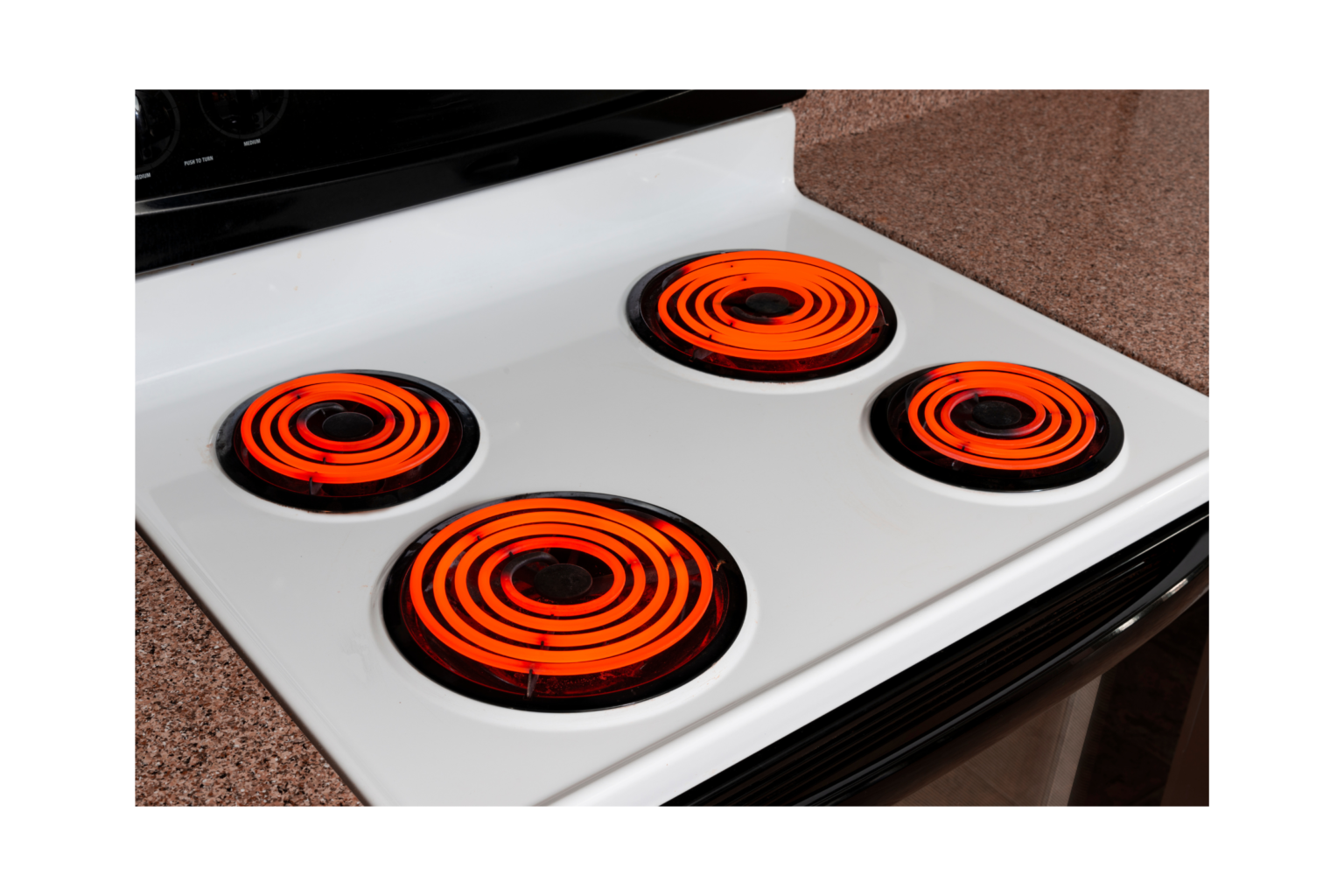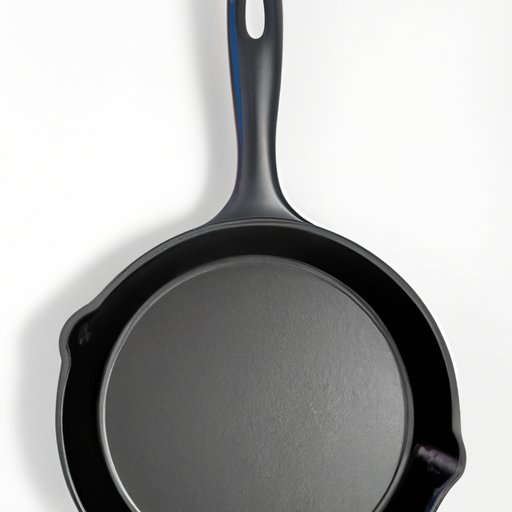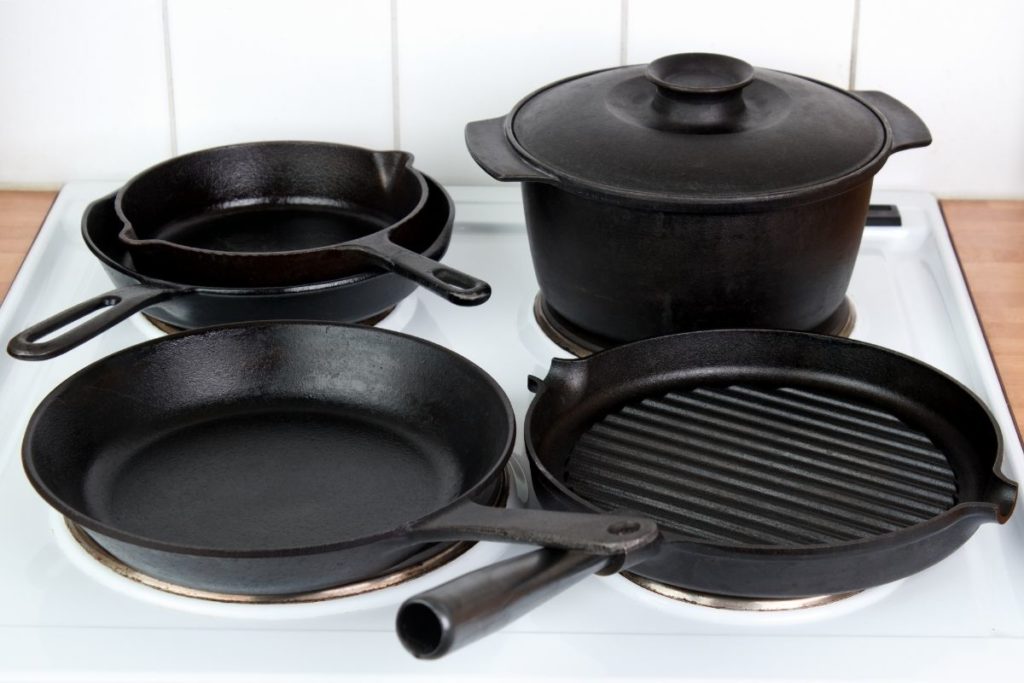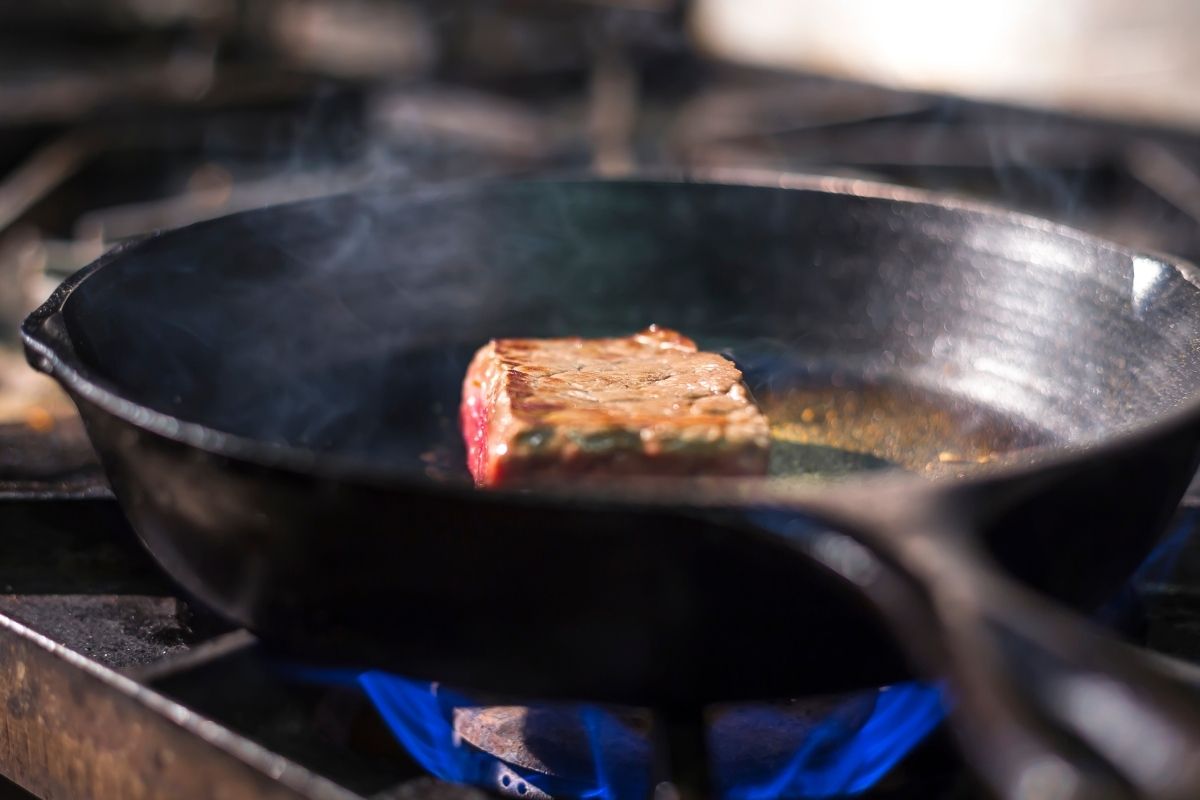Exploring the Perfect Match for Reliable and Versatile Cooking
I. Understanding the Benefits of Cast Iron Cookware

A. Superior Heat Retention: Maintaining Optimal Cooking Temperatures
Cast iron cookware is known for its exceptional heat retention properties. It absorbs heat efficiently and distributes it evenly across the cooking surface, ensuring consistent temperatures throughout the cooking process. This allows for precise control over cooking conditions, which is particularly beneficial for dishes that require steady and even heat, such as searing meats or simmering stews.
B. Versatility and Durability: Adapting to Various Cooking Methods
Cast iron cookware is incredibly versatile and can adapt to various cooking methods. Whether you’re frying, braising, baking, or even roasting, cast iron excels in every aspect. Its ability to withstand high temperatures makes it ideal for searing and browning, while its excellent heat retention allows for slow and gentle simmering. Cast iron’s durability ensures that it can withstand rigorous cooking techniques, making it a reliable choice for a wide range of recipes.
II. Electric Stoves and Cast Iron: A Perfect Match
A. Even Heat Distribution: Maximizing Cooking Performance

Electric stoves and cast iron cookware complement each other perfectly when it comes to heat distribution. The solid electric coil or glass cooktop of an electric stove provides direct and consistent heat to the cast iron surface. The smooth surface of electric stoves ensures that there are no gaps or hot spots, resulting in even and efficient heat distribution across the entire pan. This allows for precise control and even cooking, giving you consistent results every time.
B. Efficiency and Energy Conservation: Utilizing the Electric Stove’s Power
Electric stoves are highly efficient in transferring heat to cast iron cookware. With the excellent heat retention properties of cast iron, electric stoves can maintain a steady temperature without constant adjustments, leading to energy conservation. Additionally, electric stoves often have precise temperature controls, allowing you to fine-tune the cooking environment for optimal performance. This combination of efficiency and control results in less energy waste and more efficient cooking.
III. The Importance of Proper Seasoning for Cast Iron Cookware

A. Introduction to Seasoning: Creating a Natural Non-Stick Surface
Seasoning is a vital step in maintaining and enhancing the performance of cast iron cookware. Seasoning refers to the process of treating the surface of the cookware with oil and high heat to create a natural non-stick surface. The seasoning results in a thin layer of polymerized oil that not only prevents food from sticking but also protects the cast iron from rust and enhances its durability.
B. Seasoning Techniques and Tips: Achieving Optimal Seasoning Results
To achieve optimal seasoning results, start by washing the new cast iron cookware with warm water and mild soap to remove any factory coating. Thoroughly dry the cookware and apply a thin layer of cooking oil to all surfaces, including the handles and bottom. Place the cookware upside down in a preheated oven and bake at a specific temperature for a set duration. Repeat this process multiple times to build up the seasoning layers gradually. Regular use and proper maintenance will help maintain the seasoning and develop a natural non-stick surface.
IV. Cooking with Cast Iron on Electric Stoves
A. Preheating Cast Iron: Ensuring Even and Efficient Heat Distribution
When cooking with cast iron on electric stoves, preheating the cookware is crucial. Preheating enables the cast iron to reach an even temperature before adding ingredients, ensuring consistent heat distribution and preventing food from sticking to the surface. Allow the cast iron to preheat on a low to medium heat setting for a few minutes. This step guarantees that the entire cooking surface is evenly heated and ready for efficient cooking.
B. Cooking Techniques: Searing, Baking, Braising, and More
Cast iron cookware on electric stoves allows for a variety of cooking techniques. The excellent heat retention of cast iron enables searing meats to perfection by achieving a deep and flavorful crust. Cast iron is equally adept at baking, making it ideal for breads, cobblers, and cornbread. Its ability to maintain consistent heat allows for slow and gentle braising or simmering of soups and stews. The versatility of cast iron on electric stoves makes it a go-to option for countless recipes.
V. Caring for Cast Iron on Electric Stoves

A. Cleaning and Maintenance: Preserving the Cast Iron’s Longevity
Proper cleaning and maintenance are essential for preserving the longevity of your cast iron cookware when using it on electric stoves. Follow these tips to keep your cast iron in excellent condition:
- Hand-Washing: Avoid placing cast iron in the dishwasher. Instead, hand-wash it using hot water and a mild dish soap. Use a non-abrasive sponge or brush to gently scrub away any residue.
- Avoid Soaking: Do not soak cast iron in water for an extended period. Excessive exposure to water can lead to rusting. Instead, clean it immediately after use and dry it thoroughly.
- Stubborn Food Residue: For stubborn food residue or stuck-on bits, create a paste with kosher salt and a little water. Scrub the pan with the salt paste using a cloth or brush to remove any residue effectively.
- Seasoning: After each cleaning, re-season the cast iron to maintain its non-stick surface. Apply a thin layer of oil (such as vegetable oil or flaxseed oil) to the interior and exterior of the cookware. Bake it in a preheated oven for one hour at a low temperature (around 300°F or 150°C), then allow it to cool completely.
B. Avoiding Scratches and Damage: Protecting the Electric Stove’s Surface
When using cast iron on electric stoves, it is important to take precautions to avoid scratches or damage to the stove’s surface. Follow these guidelines:
- Flat Bottom: Ensure that the bottom of your cast iron cookware is flat and smooth. A rough or uneven bottom can cause scratches and damage to the electric stove’s glass or coil surface. If necessary, use a cast iron skillet with a smooth bottom or add a heat diffuser to create a buffer between the cookware and the electric stove.
- Lift, Don’t Slide: Avoid sliding cast iron cookware on the stovetop, as this can cause scratches. Instead, lift the cookware when moving it across the surface.
- Use Pot Holders or Trivets: When removing cast iron cookware from the electric stove, always use pot holders or trivets to protect your hands and to prevent any accidental contact between the hot cookware and the stove surface.
VI. Troubleshooting and Considerations
A. Temperature Control: Adjusting Heat Settings for Optimal Results
Electric stoves may heat up more slowly or take longer to cool down compared to other cooking surfaces. When using cast iron on an electric stove, it is important to adjust the heat settings accordingly. Here are some tips:
- Preheating: Preheat your cast iron cookware on a lower heat setting for a longer period before increasing it to the desired temperature. This allows the cookware to gradually heat up and ensures even heat distribution.
- Heat Adjustment: Once your cast iron cookware reaches the desired temperature, lower the heat setting slightly or use a lower heat intensity if available. Electric stoves retain heat well, so reducing the heat slightly helps maintain a consistent cooking temperature.
B. Weight and Size Considerations: Handling and Storage Aspects
Cast iron cookware is known for its weight and durability. Consider these factors when handling and storing your cast iron:
- Two-Handed Approach: Due to its weight, use a two-handed approach when lifting and moving cast iron cookware to avoid straining your wrists or causing accidents.
- Proper Storage: To prevent scratching or damage to your electric stove, store your cast iron cookware in a designated area, such as a cast iron storage rack or a towel-lined cabinet.
Conclusion:
Caring for cast iron when using it on electric stoves ensures the longevity and optimal performance of both the cookware and the stove surface. Proper cleaning and maintenance, such as hand-washing, seasoning, and avoiding soaking, are vital for preserving the cast iron’s quality. Avoid scratches and damage by using flat-bottomed cookware, lifting instead of sliding, and protecting the electric stove’s surface with pot holders or trivets. Adjust the heat settings on your electric stove to account for its specific characteristics, and handle your cast iron cookware with care due to its weight. By following these tips and considerations, you can enjoy the reliable and versatile cooking experience that comes with using cast iron on your electric stove for years to come.

